Zhengchao Chen
Aerospace Information Research Institute, Chinese Academy of Sciences
Research on Foundation Model for Spatial Data Intelligence: China's 2024 White Paper on Strategic Development of Spatial Data Intelligence
May 30, 2024Abstract:This report focuses on spatial data intelligent large models, delving into the principles, methods, and cutting-edge applications of these models. It provides an in-depth discussion on the definition, development history, current status, and trends of spatial data intelligent large models, as well as the challenges they face. The report systematically elucidates the key technologies of spatial data intelligent large models and their applications in urban environments, aerospace remote sensing, geography, transportation, and other scenarios. Additionally, it summarizes the latest application cases of spatial data intelligent large models in themes such as urban development, multimodal systems, remote sensing, smart transportation, and resource environments. Finally, the report concludes with an overview and outlook on the development prospects of spatial data intelligent large models.
Multi-Grained Angle Representation for Remote Sensing Object Detection
Sep 07, 2022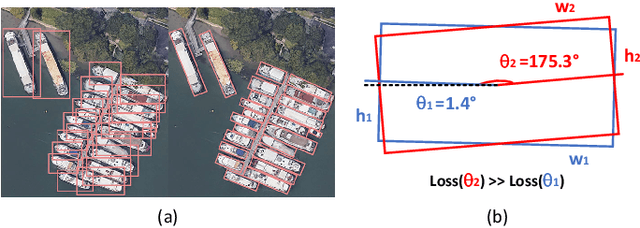
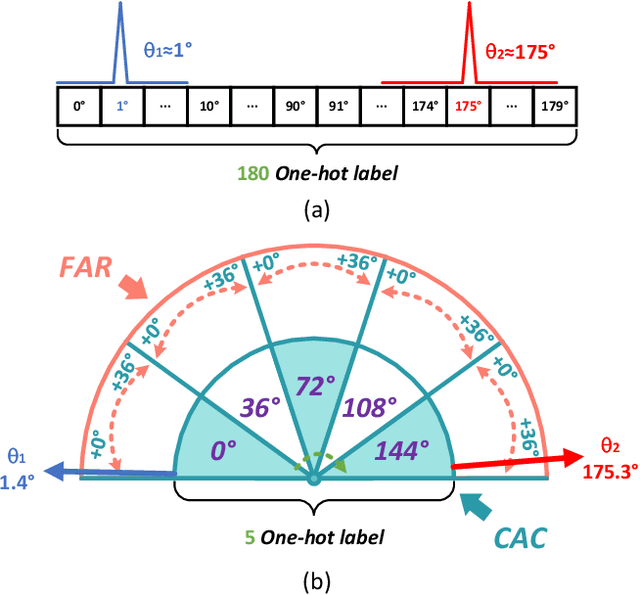
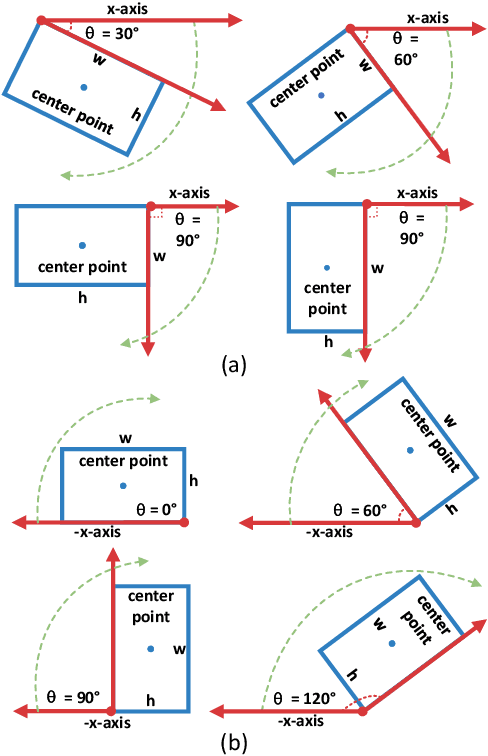
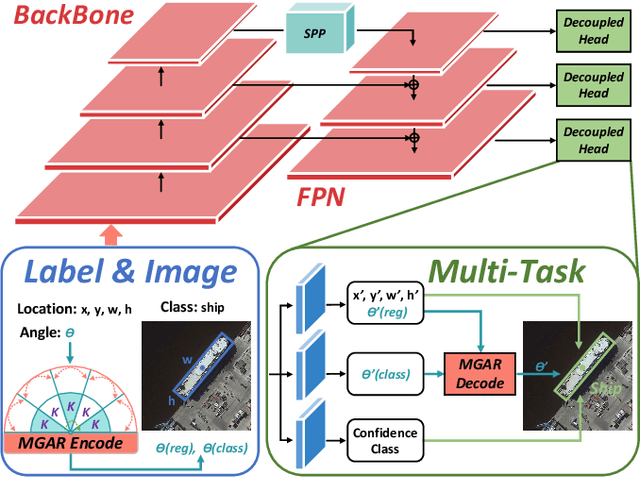
Abstract:Arbitrary-oriented object detection (AOOD) plays a significant role for image understanding in remote sensing scenarios. The existing AOOD methods face the challenges of ambiguity and high costs in angle representation. To this end, a multi-grained angle representation (MGAR) method, consisting of coarse-grained angle classification (CAC) and fine-grained angle regression (FAR), is proposed. Specifically, the designed CAC avoids the ambiguity of angle prediction by discrete angular encoding (DAE) and reduces complexity by coarsening the granularity of DAE. Based on CAC, FAR is developed to refine the angle prediction with much lower costs than narrowing the granularity of DAE. Furthermore, an Intersection over Union (IoU) aware FAR-Loss (IFL) is designed to improve accuracy of angle prediction using an adaptive re-weighting mechanism guided by IoU. Extensive experiments are performed on several public remote sensing datasets, which demonstrate the effectiveness of the proposed MGAR. Moreover, experiments on embedded devices demonstrate that the proposed MGAR is also friendly for lightweight deployments.
An Attention-Fused Network for Semantic Segmentation of Very-High-Resolution Remote Sensing Imagery
May 28, 2021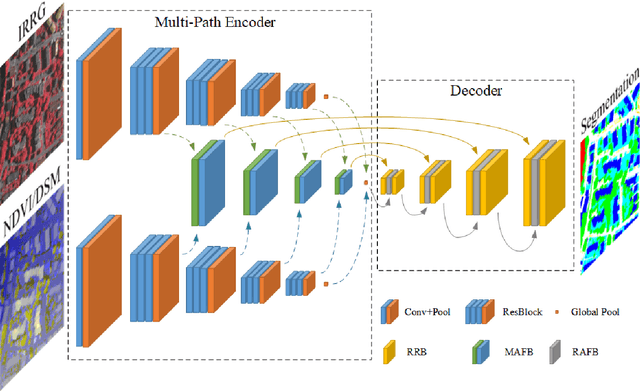

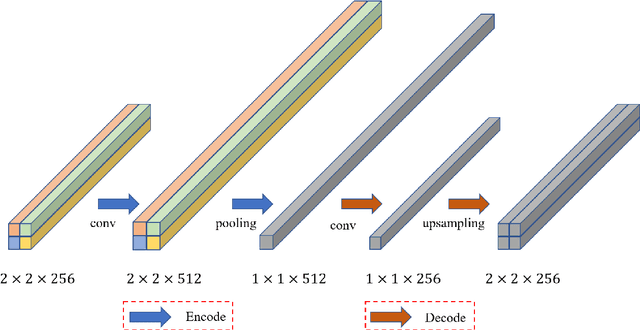

Abstract:Semantic segmentation is an essential part of deep learning. In recent years, with the development of remote sensing big data, semantic segmentation has been increasingly used in remote sensing. Deep convolutional neural networks (DCNNs) face the challenge of feature fusion: very-high-resolution remote sensing image multisource data fusion can increase the network's learnable information, which is conducive to correctly classifying target objects by DCNNs; simultaneously, the fusion of high-level abstract features and low-level spatial features can improve the classification accuracy at the border between target objects. In this paper, we propose a multipath encoder structure to extract features of multipath inputs, a multipath attention-fused block module to fuse multipath features, and a refinement attention-fused block module to fuse high-level abstract features and low-level spatial features. Furthermore, we propose a novel convolutional neural network architecture, named attention-fused network (AFNet). Based on our AFNet, we achieve state-of-the-art performance with an overall accuracy of 91.7% and a mean F1 score of 90.96% on the ISPRS Vaihingen 2D dataset and an overall accuracy of 92.1% and a mean F1 score of 93.44% on the ISPRS Potsdam 2D dataset.
* 35 pages. Published by ISPRS Journal of Photogrammetry and Remote Sensing
FCCDN: Feature Constraint Network for VHR Image Change Detection
May 23, 2021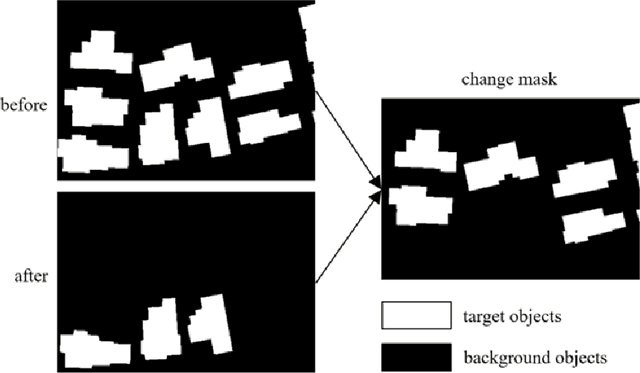

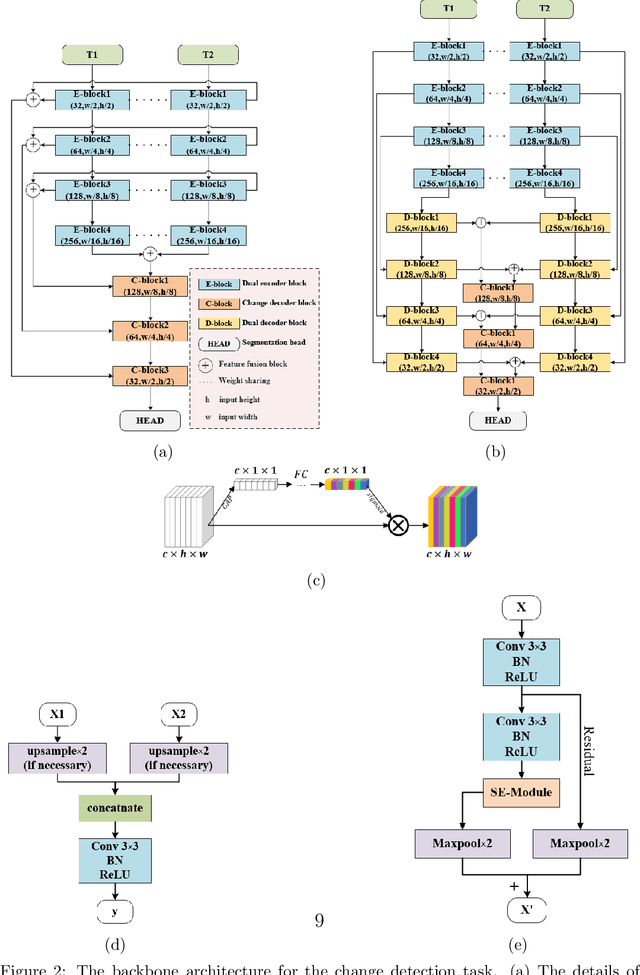
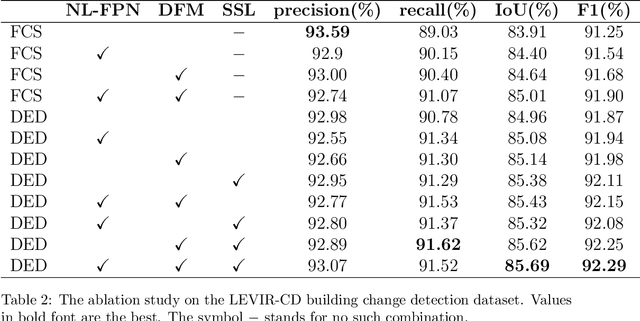
Abstract:Change detection is the process of identifying pixel-wise differences of bi-temporal co-registered images. It is of great significance to Earth observation. Recently, with the emerging of deep learning (DL), deep convolutional neural networks (CNNs) based methods have shown their power and feasibility in the field of change detection. However, there is still a lack of effective supervision for change feature learning. In this work, a feature constraint change detection network (FCCDN) is proposed. We constrain features both on bi-temporal feature extraction and feature fusion. More specifically, we propose a dual encoder-decoder network backbone for the change detection task. At the center of the backbone, we design a non-local feature pyramid network to extract and fuse multi-scale features. To fuse bi-temporal features in a robust way, we build a dense connection-based feature fusion module. Moreover, a self-supervised learning-based strategy is proposed to constrain feature learning. Based on FCCDN, we achieve state-of-the-art performance on two building change detection datasets (LEVIR-CD and WHU). On the LEVIR-CD dataset, we achieve IoU of 0.8569 and F1 score of 0.9229. On the WHU dataset, we achieve IoU of 0.8820 and F1 score of 0.9373. Moreover, we, for the first time, achieve the acquire of accurate bi-temporal semantic segmentation results without using semantic segmentation labels. It is vital for the application of change detection because it saves the cost of labeling.
A Fast and Precise Method for Large-Scale Land-Use Mapping Based on Deep Learning
Aug 09, 2019Abstract:The land-use map is an important data that can reflect the use and transformation of human land, and can provide valuable reference for land-use planning. For the traditional image classification method, producing a high spatial resolution (HSR), land-use map in large-scale is a big project that requires a lot of human labor, time, and financial expenditure. The rise of the deep learning technique provides a new solution to the problems above. This paper proposes a fast and precise method that can achieve large-scale land-use classification based on deep convolutional neural network (DCNN). In this paper, we optimize the data tiling method and the structure of DCNN for the multi-channel data and the splicing edge effect, which are unique to remote sensing deep learning, and improve the accuracy of land-use classification. We apply our improved methods in the Guangdong Province of China using GF-1 images, and achieve the land-use classification accuracy of 81.52%. It takes only 13 hours to complete the work, which will take several months for human labor.
 Add to Chrome
Add to Chrome Add to Firefox
Add to Firefox Add to Edge
Add to Edge